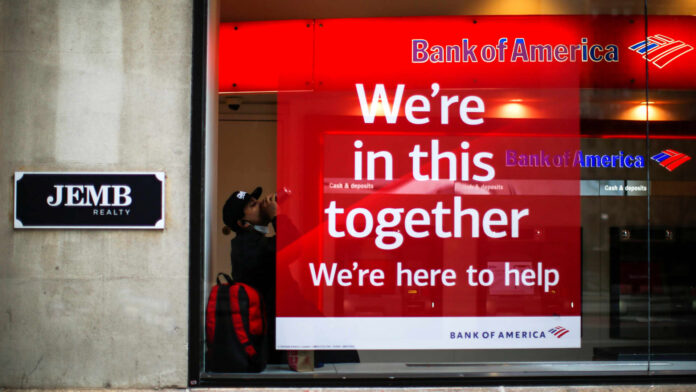Banks finally got a long-awaited boost to interest rates this year after a decade of toiling in a low-rate environment. It didn’t go as planned. A year ago, big lenders including Bank of America and Wells Fargo were the top picks of the analyst community because they were expected to benefit from higher rates . Loan growth coupled with vast deposit bases would drive gains in interest income as the Federal Reserve hiked rates, the thinking went. While that trend played out, the bull case was spoiled by inflation at four-decade highs, which forced the Fed to boost rates more than expected , triggering concerns of a recession. In a downturn, banks are exposed to surging loan defaults, reduced loan demand and write-downs on assets. That’s why the KBW Bank Index slumped 23% through mid-December, worse than the 17% decline of the S & P 500 and on track for its worst year since 2008. “The interest rate-trade is getting long in the tooth, and meanwhile there are uncertainties on deposits, both on costs and outflows,” David Konrad, a KBW analyst, told CNBC in a phone interview. He cut his recommendation on the sector to market weight from overweight last week. Net interest income growth will probably peak in this year’s fourth quarter at 30% and slump to just 5% by the end of 2023, Konrad said in a Dec. 13 note. Among banks, he favors Goldman Sachs and Morgan Stanley because “they have already been operating in a recession” and their capital markets businesses will rebound before retail banking does, he said in the interview. Multiple headwinds Headwinds faced by banks next year include expectations for shrinking loan margins in the second half, higher reserves for bad loans, rising funding costs for deposits, higher expenses due to wage inflation and continued pressure on mortgage , wealth management and investment banking revenue, according to Raymond James analysts led by Daniel Tamayo. “With many of our positive catalysts from 2021-22 played out, we believe 2023 will be volatile for bank stocks, with the best performers those who can withstand headwinds for the industry,” Tamayo said in a Dec. 15 note. Tamayo favors smaller banks over megacaps for their lower valuations, less strict regulatory oversight and the possibility of mergers. He has a strong buy rating on Cadence Bank , Huntington Bancshares , First Republic and Wintrust Financial. Hold off until 2024? In that vein, Morgan Stanley analyst Betsy Graseck advised that it was too early to go long large cap banks. Investors should pile into the sector only after loan delinquencies peak or the Fed ends its balance sheet-shrinking campaign known as quantitative tightening, she said in a Dec. 6 note. “It’s not enough for the Fed to just slow or stop hiking rates, it has to end QT to get more positive on the banks,” Graseck said. That’s because “we expect that credit is likely to surprise more negatively than positively over the next 12 months as the economy deals with still-high inflation, higher borrowing costs” and rising joblessness, she added. The wait could be long: Morgan Stanley economists see QT ending in the first half of 2024. The bull case On the other hand, the group could rally next year if the economy manages a soft landing or mild recession, Bank of America analyst Ebrahim H. Poonawala said in a Dec. 11 note. Much of the downside for the industry is already embedded in current valuations, according to Baird analyst David George. That could set up the inverse of 2022 – a year in which pessimism leads to better-than-expected stock returns. Veteran analyst Mike Mayo of Wells Fargo said that bank stocks could pop 50% in 2023 by proving their resilience in a recession. That’s because they’ve been de-risked over more than a decade of increasingly stringent financial regulations. “We think banks should perform better in an upcoming recession than for any other in modern history,” Mayo said in a Dec. 14 note. “What seems most underappreciated is the degree that bank structural changes over the past decade prepare the industry for the cyclical challenges ahead.” His top picks are Bank of America, U.S. Bancorp and PNC Financial Services . The three lenders are prepared to navigate a downturn with strong credit quality, lower expenses and higher efficiency, he said. —CNBC’s Michael Bloom contributed to this report.
© heardonwallstreet.com


